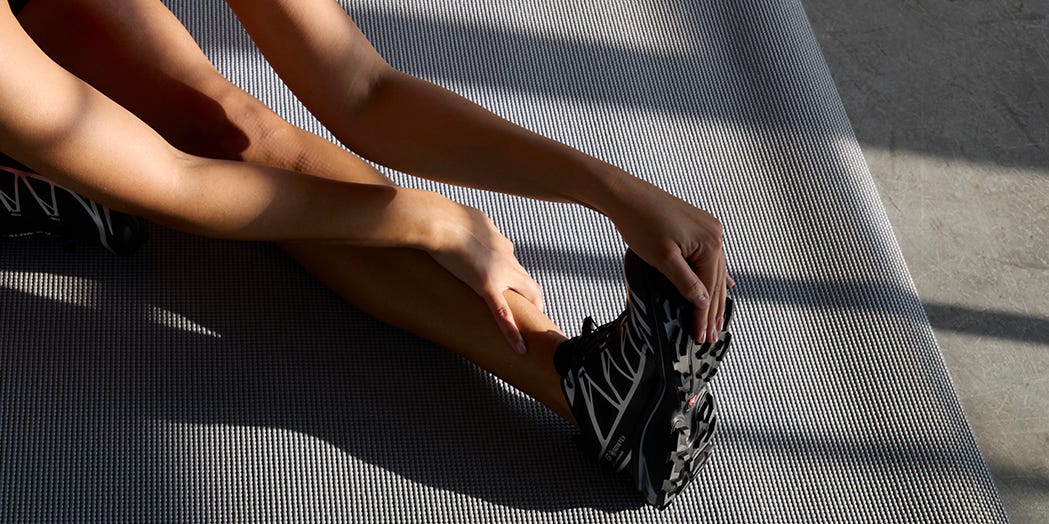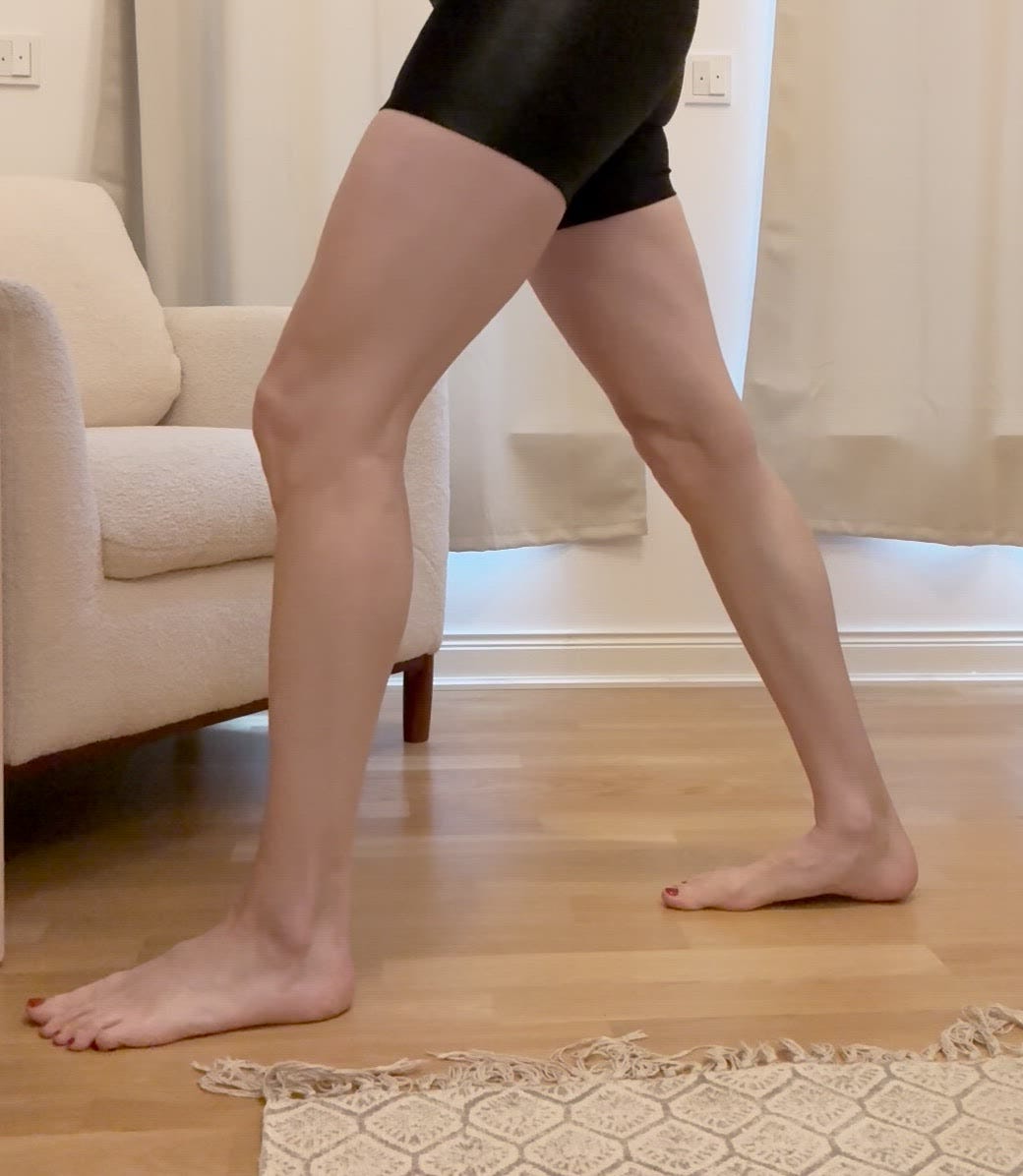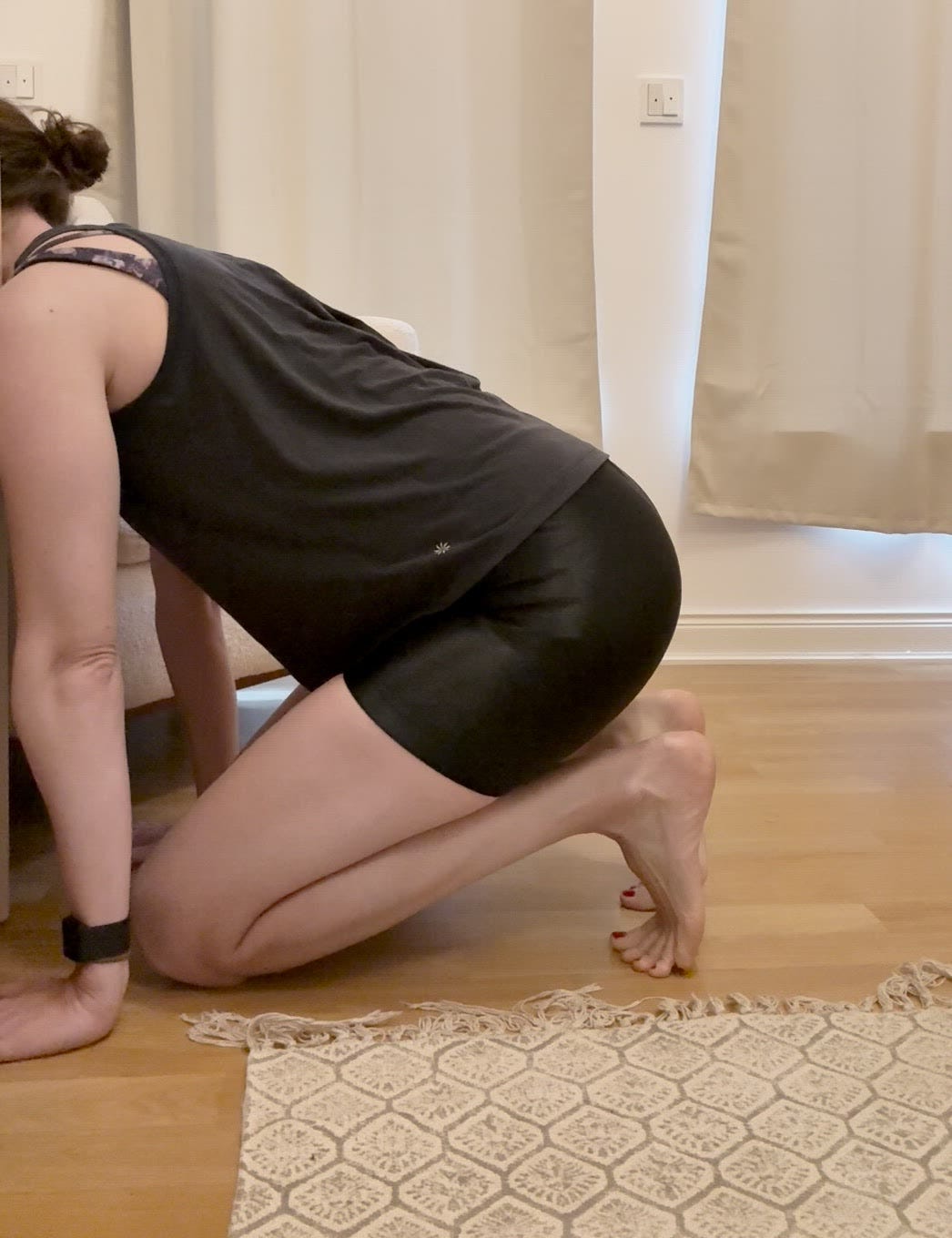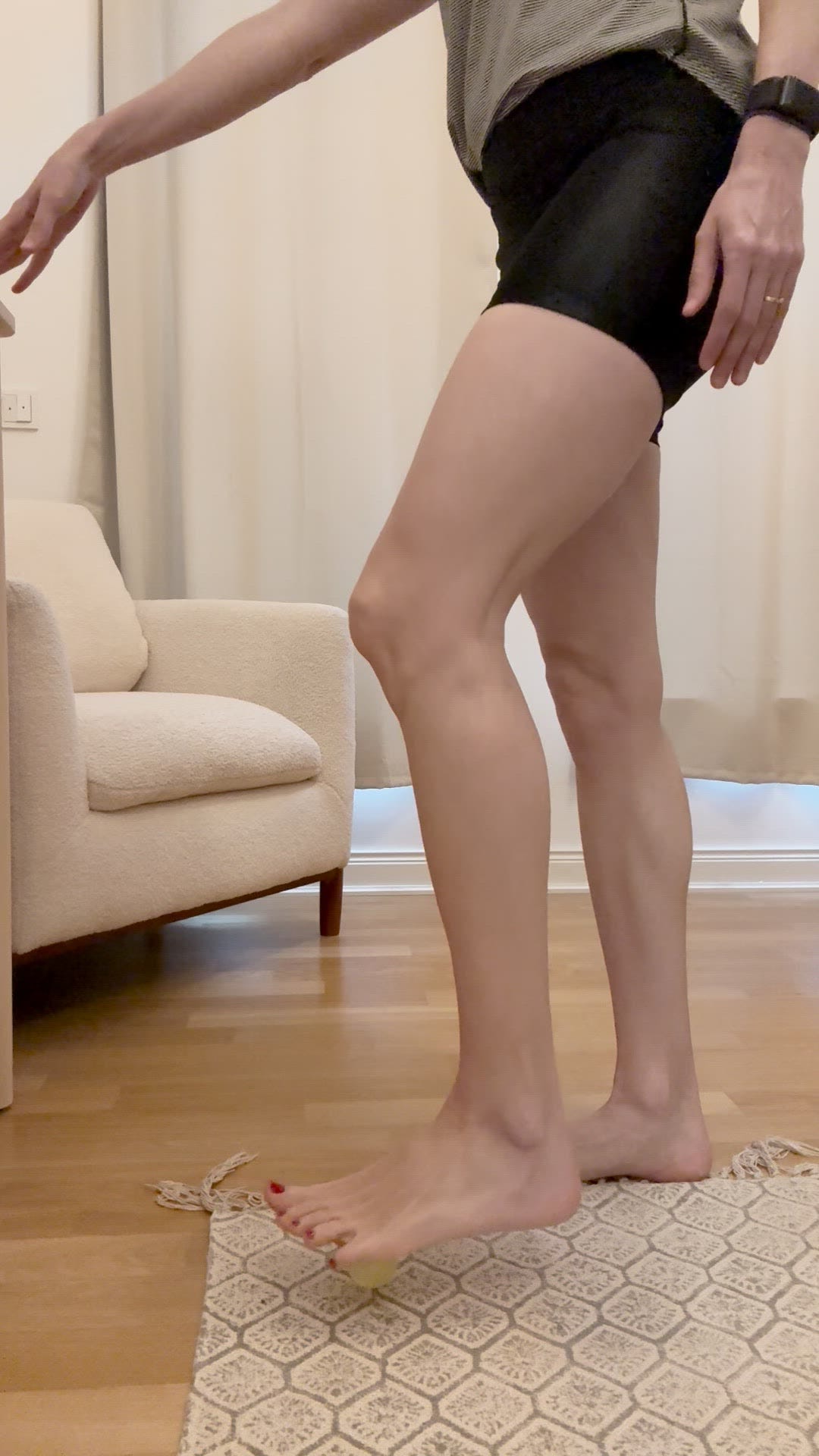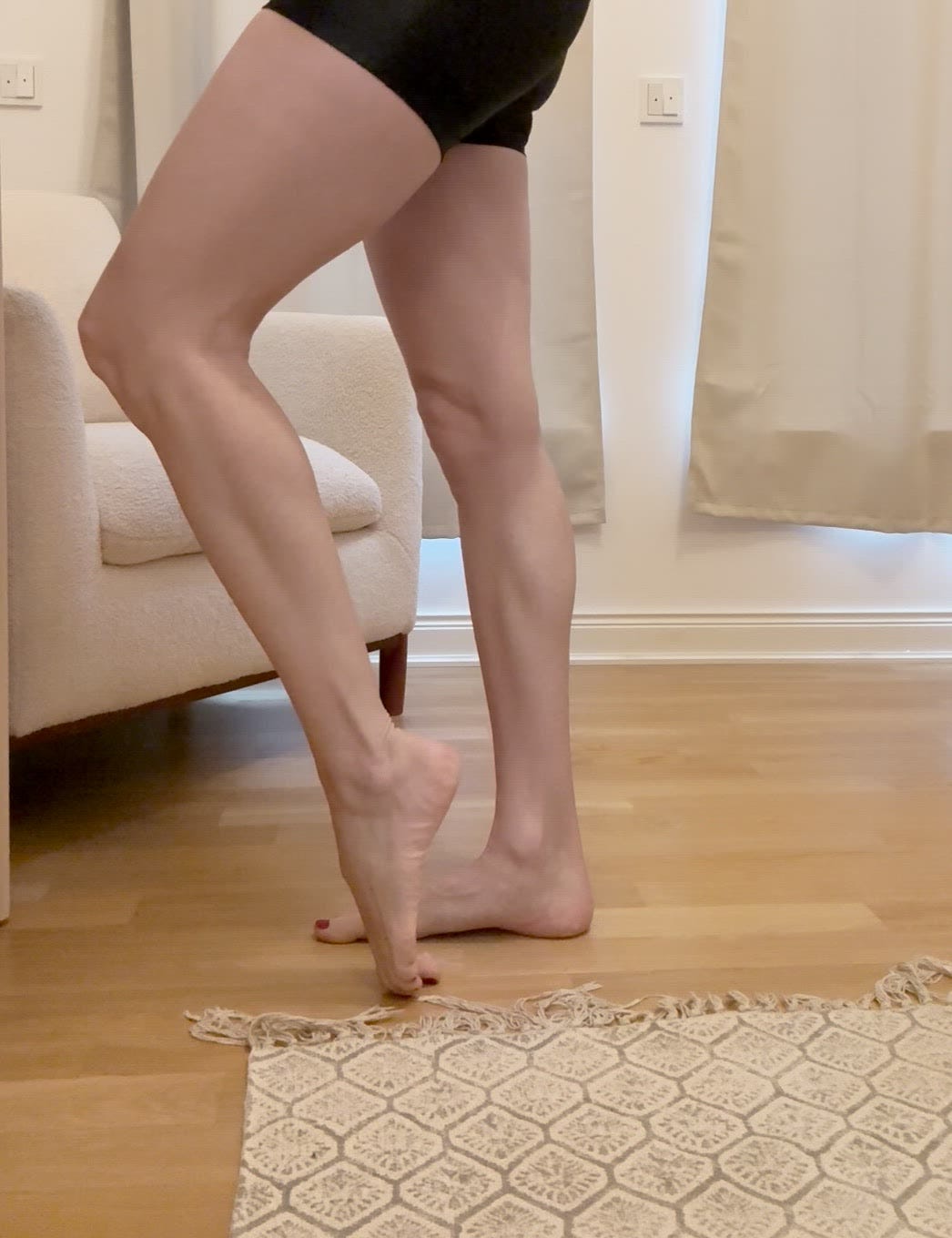Ever felt that sharp, stabbing heel pain when you take your first few steps in the morning? It might be plantar fasciitis, which affects millions of people in the U.S. each year, and can be a real doozy to get rid of. It’s especially common in active women and anyone who spends long hours on their feet (we’re looking at you, nurses, teachers, and runners).
The culprit? Degeneration and inflammation of the plantar fascia, a thick band of tissue that stretches from your heel to your toes. This tissue acts like a built-in arch support system for your feet. When it’s inflamed, every step can become painful. That all sounds pretty dismal, but don’t worry–some good stretching can get you back on your feet without that ouch factor.
While supportive shoes and cushioned insoles might offer temporary relief, targeted stretching is actually one of the most effective and lasting ways to ease symptoms and speed up healing, according to research in the Journal of Musculoskeletal and Neuronal Interactions. In this article, you’ll learn exactly which expert-approved stretches work best to release tension, improve mobility, and support recovery.
Meet the experts: Erin Kelly, PT, DPT, is a doctor of physical therapy and running coach at Eastside Movement Company. Emily Splichal, DPM, is a podiatrist and human movement specialist in NYC.
What is plantar fasciitis?
Plantar fasciitis is one of the most common causes of heel pain, and happens when the plantar fascia—that thick band of connective tissue mentioned earlier that runs from your heel to your toes—becomes weakened and irritated due to natural breakdown of the tissue.
There isn’t one single cause of plantar fasciitis, but there are some contributing factors to consider. “Overuse is one of the most common causes of plantar fasciitis, often from a sport that involves a lot of repetition, like running, or periods of prolonged standing,” Erin Kelly, PT, DPT, a doctor of physical therapy and running coach. But overuse, alone, doesn’t usually do it
Other habits, such as overpronation (rolling the foot inward too much), limited ankle mobility (especially into dorsiflexion), weak foot muscles, and age-related degeneration of the tissue, are also major contributors, says Emily Splichal, DPM, a podiatrist and human movement specialist. Wearing unsupportive footwear, or switching too quickly to barefoot-style shoes, can also put excess strain on the plantar fascia, she says.
The Benefits Of Stretching For Plantar Fasciitis
- Relieves tension in the plantar fascia
- Improves calf and Achilles flexibility
- Boosts blood flow and healing
- Supports natural foot movement
- Helps prevent future flare-ups
Stretching is a must if you’re dealing with plantar fasciitis. It helps ease tightness in your calves and ankles, reduces tension in the fascia (the thick band of tissue on the bottom of your foot), and improves how your feet move overall—reducing the strain that leads to pain.
“How you stretch, what you stretch, and when you stretch really matter,” says Dr. Splichal. That’s because stretching helps muscles return to their optimal length—aka the point where they work best. When muscles get tight, we start to move differently to make up for the limited range, says Kelly. Over time, these movement compensations can overload certain areas and lead to injury.
Here’s how stretching helps relieve plantar fasciitis and keep it from coming back, according to Dr. Splichal:
- It reduces fascia tension. Stretching loosens tight connective tissue on the bottom of the foot, decreasing the pulling on the heel bone. This helps relieve pain and irritation.
- It improves calf and Achilles flexibility. When your calves or Achilles are tight, they increase stress on the plantar fascia during activities like walking or running. Stretching restores mobility and reduces that load.
- It promotes healing. Gentle stretching increases blood flow, which brings oxygen and nutrients to the area and helps flush out inflammatory chemicals that can make the pain worse.
- It supports natural movement. Stretching won’t completely change how you move (that takes strength work, too), but it sets the stage. “When key muscles and fascia are flexible, the foot can move more efficiently during standing, walking, and running,” says Dr. Splichal. That helps reduce compensations, like overpronation, that make plantar fasciitis worse.
- It helps prevent recurrence. Even after symptoms go away, maintaining flexibility in the calves, Achilles, and plantar fascia is key to avoiding future flare-ups.
But it’s not just about the foot—tightness in your legs can also throw off alignment and contribute to plantar fasciitis, says Kelly. “Looking at the bigger picture and stretching the surrounding muscles helps restore optimal movement and reduce risk of injury,” she says.
The Best Plantar Fasciitis Stretches To Try
Some of the most effective stretches for plantar fasciitis target the calf, big toe, and base of the foot, according to Dr. Splichal. Here are our experts’ top picks for reducing plantar fasciitis symptoms:
Instructions: Do all five stretches first thing in the morning to mobilize your arch after getting stiff overnight. Hold each stretch for 60 seconds. Complete three rounds of each stretch before moving to the next. Doing them after prolonged periods of sitting or standing, or after a workout, will also be helpful.
Calf Stretch
Why it rocks: The calf is made up of two muscles: the gastrocnemius and soleus. Stretching these muscles helps reduce tension on the Achilles tendon, which is present in nearly 80 percent of those with plantar fasciitis, says Kelly. Tension in these muscles can limit ankle dorsiflexion, reduce shock absorption and increase stress on the plantar fascia, making calf muscle stretches essential to getting rid of your plantar fasciitis pain, she says.
How to:
- Stand in a split stance (one leg forward, one leg back) facing a wall, both hands on wall.
- Keep back heel on floor and lunge front leg forward until you feel a stretch along back of lower leg (gastrocnemius muscle).
- Bend back knee (while keeping heel on floor) to target deeper calf muscle (the soleus).
Kneeling Big Toe Stretch
Why it rocks: Limited big toe extension compromises foot stability and propulsion, increasing strain on the plantar fascia during walking, running, and jumping. This stretch helps build mobility.
How to:
- Kneel on floor (fold up a yoga mat or use a pillow under knee if you’d like), with toes curled under
- Alternate between leaning forward and sitting hips back as close to heels as possible to increase stretch. (All toes will stretch in this position, but make sure emphasis is on big toes.)
Towel Stretch
Why it rocks: Similar to the kneeling big toe stretch, this stretch lengthens the plantar fascia and big toe to specifically target the fascia, says Kelly.
How to:
- Sit with legs extended straight in front of you.
- Loop a towel around the ball of foot, making sure toes are also inside.
- With legs straight, gently pull on towel, extending forefoot and toes.
Foot Rolling With Ball
Why it rocks: “Rolling out your plantar fascia can increase blood flow to the area and help decrease muscle tension,” says Kelly. The tibialis posterior, a muscle that controls pronation, or lengthening of the arch as your foot hits the ground, is also located within the arch. Releasing tension in the tibialis posterior muscle ensures adequate shock absorption at the level of the foot. As a bonus, it just feels good!
How to:
- While seated or standing, place a lacrosse ball (or any small ball) under arch of foot.
- Put pressure (as tolerated) through foot and roll foot forward and back over ball for 30 seconds.
- Then, roll foot side to side over ball for 30 seconds.
Pro tip: Try gradually pressing harder on the ball for a deeper stretch.
Tibialis Anterior Stretch
Why it rocks: Tension or tightness in the front of the shin can restrict ankle range of motion and cause muscle imbalances throughout the lower leg, which can put more pressure throughout the plantar fascia.
How to:
- Stand in front of a wall with both hands on wall, one knee bent and lifted.
- Point toe down towards floor, resting top of foot on floor.
- Push slightly into floor so you feel a stretch in front of shins.
Pro tip: For a more intense stretch, try it in a kneeling position, sitting on your feet.
Other Pro Tips To Manage Plantar Fasciitis
Stretching is key, but it’s not a cure-all. “Just stretching alone will not solve or heal plantar fasciitis,” says Kelly. To truly tackle the issue, you’ll also need to strengthen the muscles in and around your foot and ankle—especially those that support your arch—and do regular soft tissue work.
Even if you’re not currently in pain, daily foot care is crucial. “Massage the bottom of your foot and stretch your calves every day—even if you don’t have heel pain,” says Dr. Splichal. “Prevention is key to avoiding plantar fasciitis flare-ups and tissue overload.”
Here are a few expert-backed ways to support healing and avoid future issues:
- Wear supportive, well-cushioned shoes, especially on hard surfaces. Check out our picks for the best walking shoes for plantar fasciitis.
- Avoid going barefoot on hard floors.
- Strengthen your foot and ankle muscles regularly. Focus on intrinsic foot muscles and ankle stabilizers.
- Ease into new footwear or activity changes slowly.
- Use ice massage or massage tools to calm inflammation and relieve tension.
- Try toe spacers to help stretch the small muscles between your toes. Kelly recommends starting with 15 to 30 minutes a day, gradually increasing wear time. “Creating space between the toes can reduce tension in the plantar fascia and improve foot function,” she says. (Kelly recommends The Toe Spacer.)
Because plantar fasciitis often stems from more than just foot tension—think weakness, alignment issues, or compensation patterns—it’s worth taking a full-body approach. If your symptoms last more than a few weeks, are severe, or impact your daily life, book an appointment with a physical therapist or doctor. They can assess your gait, rule out other conditions, and guide you through a recovery plan that actually sticks.
Rachel Tavel is a doctor of physical therapy, strength and conditioning specialist certified by the National Strength and Conditioning Association, and writer. Her writing has been published in Forbes, Fortune, Men’s Health, Women’s Health, Runner’s World, SELF, Bicycling Magazine, The Huffington Post, and more. She co-authored the book “Stretch Yourself Healthy Guide: Easy Routines to Relieve Pain, Boost Energy, and Feel Refreshed” (Prevention, 2020) and is a Forbes Health Advisory Board Member. Prior to becoming a physical therapist, Rachel was a travel writer living and traveling throughout South America. Connect: , , Email: .
Read the full article here


